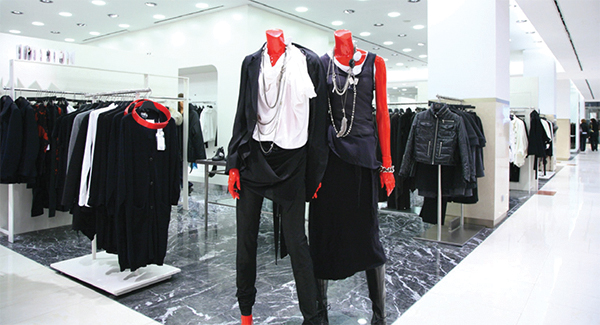VERTICAL FOCUS | Apparel

Quick-Changing Supply Chains
As trends in the fashion industry constantly change to keep up with evolving consumer needs and expectations, supply chain and logistics professionals need to be just as nimble and flexible to keep up.
The apparel industry used to be divided into two seasons: spring/summer and fall/winter. Today, however, with the desire to stay ahead of trends, retailers are offering new inventory multiple times per year. As a result, suppliers and shippers face increased pressure to keep up with timely apparel production and delivery.
Consumers also expect more from e-commerce retailers’ delivery promises. Thanks to the Amazon effect, shoppers want their packages as soon as possible. This poses challenges for e-commerce retailers as they not only race to deliver packages without inaccuracies, but also have to reconfigure the way they store and stock inventory. With single- and small-item online purchases—one necklace or a single T-shirt—becoming the norm, warehousing and fulfillment methods need to change.
Sizing Up the Apparel Market
- 40% of all apparel sold
in the United States is imported from China - $2,000 approximate amount Americans spend on apparel every year
- $340 billion total retail value of the luxury apparel market
- $3 trillion total value of the global textile industry
SOURCEs: inkxe.com, study.com
It’s All in the Jeans
Once recognized as the go-to fashion choice for nearly every occasion, jeans are steadily taking up less room in consumers’ closets. Denim sales in the United States have declined by nearly 14% over the past four years, reports The Wall Street Journal.
No longer solely focused on aesthetics, apparel consumers are now looking for eco-friendly clothing sourced from transparent, ethical supply chains. It will be interesting to see how denim brands restructure their sustainable sourcing approaches to meet consumer needs.
J.Crew, for example, limits its inventory to products that come solely from sustainable suppliers. Primark recently debuted a line of jeans made from organic cotton supplied by a sustainable sourcing program based in India.
Other apparel companies are less interested in sustainability and more focused on keeping pace with athleisure brands such as Lululemon and Athleta, which continue to attract dedicated customers. In 2017, imports of women’s elastic knit pants exceeded those of blue jeans, according to U.S. Census data, driving denim brands to incorporate elements of comfort into their jeans.
American Eagle and Levi’s, for example, are adding more stretch to their jean designs in an attempt to gain favor with comfort-focused consumers. Although this change will require the retailers to reconfigure their current sourcing methods, shoppers looking for an easy fit will likely welcome the effort.
Clothes Call
The United States is the largest importer of garments in the world.
SOURCE: inkxe.com
